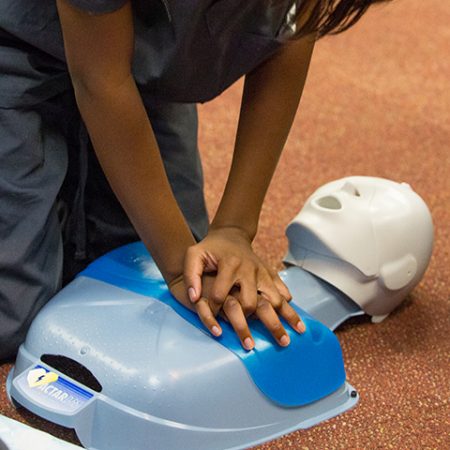
Nearly 150 eighth- through 10th-graders from five counties across Florida earned their CPR certification Jan. 23 as participants in the Florida State University College of Medicine’s SSTRIDE program. SSTRIDE (Science Students Together Reaching Instructional Diversity and Excellence) was developed in 1994 by Outreach and Advising Director Thesla Berne-Anderson to increase primary care physician talent in rural and underserved areas in Florida through classroom and after-school teaching.
Physician hopefuls from Leon, Gadsden, Madison, Okaloosa and Orange counties gathered in FSU’s Oglesby Union classrooms – a first-time college experience for some – to be trained using head-and-chest “manikins.” With the guidance of instructor Barry Hartin of the Southeastern School of Health Sciences, and hands-on assistance from the Leon County Emergency Medical Services team, students conducted chest compressions and breaths, used an automated external defibrillator and learned the Heimlich maneuver.
Eager to practice their new skills, students had such questions as whether they could injure someone inadvertently or whether they should check for a pulse before administering CPR. After completing the course, students received CPR certification from the American Heart Association to take back to their respective counties, where Hartin encouraged them to “go for it.”



